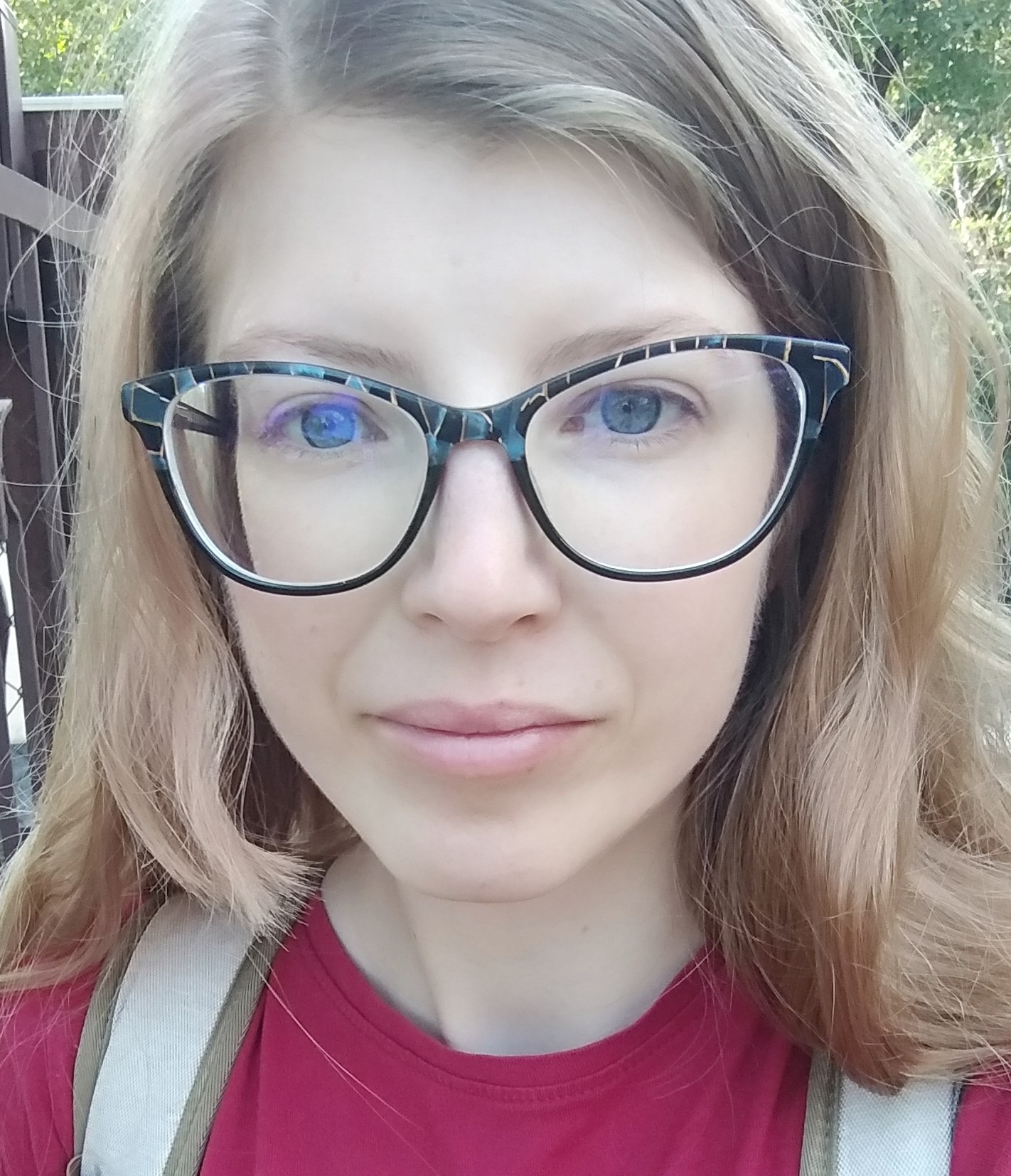Vezető / HEAD OF THE LAB:
Dr Adorján István, dr. med. univ., PhD
Elérhetőség / Contact us:
email: neuropsych.lab.se@gmail.com
Tel.: +3614591500/53716
Kutatás
Kutatási Profil
I. CELLULÁRIS ÉS TRANSZKRIPTOMIKAI BIOMARKEREK KUTATÁSA AUTIZMUS SPEKTRUM ZAVARBAN
Az autizmus spektrum zavar (ASD) előfordulása 0.6 % a teljes népességre vetítve. Ez óvatos becslések szerint legalább 40 millió embert jelent világszerte és mintegy 60.000 embert Magyarországon. Mindezek ellenére az ASD pontos neuropatológai háttere még mindig nem tisztázott, aminek oka részben a kutatható agyszövet hiánya (ASD esetén a világ különböző pontjain tárolt agyak száma 100 körül van), részben a kvantitatív neuroanatómiai munka relatíve időigényes volta. Sajnos jelenleg nem áll rendelkezésre olyan celluláris biomarker, amelynek segítségével a neuropatológiai diagnosztika objektív véleménnyel szolgálna a kórképekkel kapcsolatban.
A laborban emberi agyak post mortem vizsgálatát végezzük az immunhisztokémia és transzkriptomika kombinációjával. A beszkennelt metszetek kiértékelése manuálisan valamint ‘gépi tanuláson’ alapuló algoritmusok kombinációjával történik, amely lehetővé teszi több millió neuron morfometriai és topográfiai analízisét. Ez a megközelítés nagyságrendekkel erősebb statisztikai kiértékelést biztosít, mint a korábban rendelkezésre álló neuroanatómiai módszerek. Az egysejtszintű RNS szekvenálás segítségével minden korábbinál pontosabban ismerhetők fel az ASD-ben érintett neuronpopulációk és molekuláris mechanizmusok. Ennek az eljárásnak az információtartalma tovább növelhető a különböző biológiai szintekről származó adatok (immunhisztokémia, qRT-PCR, in situ hibridizáció) egybevetésével. Az ASD állatmodelljeinek (CNTNAP2-KO, SHANK3-KO) segítségével meggyőződhetünk arról, hogy az emberben sérültnek talált neuronpopulációk funkciója evolúciósan konzervált vagy a főemlős evolúció során alakult-e ki.
A neuronális körök feltérképezése még koránt sem teljes a humán prefrontális kéregben, ami gátolja az autizmusban sérült neuronpopulációk funkcionális következményeinek megértését. A kortikális parvalbumin-immunpozitív neuronok érintettsége a leginkább elfogadott a tudományos közvélemény részéről. Azonban a legutóbbi egysejtszintű RNS szekvenáláson alapuló tanulmány szerint a kortikális calretinin-immunpozitív neuronok legalább ugyanennyire jelentősek az autizmus patológiájában (Velmeshev et al. 2019). Meglepő módon, nem áll rendelkezésünkre információ a calretinin-immunpozitív neuronok afferens és efferens kapcsolatairól a humán kortexben, valamint neuronális körökben elfoglalt pontos helyzetéről. Enélkül viszont esélyünk sincs megérteni az autizmusban megváltozott calretinin-immunpozitív neuronpopulációk funkcionális relevanciáját és tüneti szintű következményeit.
II. CELLULÁRIS ÉS TRANSZKRIPTOMIKAI BIOMARKEREK KUTATÁSA SKIZOFRÉNIÁBAN
A skizofrénia előfordulása 1% körüli, amely mintegy 75 millió embert érint világszerte és 100.000 embert hazánkban. A skizofrénia egy tünetileg is heterogén kórkép (betegségcsoport), időben változó tüneti megnyilvánulással, amelynek pontos neuropatológiai háttere még nem ismert. Mintegy 110 év telt el azóta, hogy Eugen Bleuler először alkalmazta a pszichiátriában a skizofrénia kifejezést, azonban az idegszövettani elváltozás mindmáig tisztázatlan. Bár sok részinformáció áll rendelkezésünkre a működésükben leginkább megváltozott/leginkább érintett agyterületekről és a genetikai mintázatokról, mindmáig nem állt össze a teljes kép. Nem fedezték még fel a betegség biomarkereit, ami alapján megbízhatóan, objektíven tudnánk diagnosztizálni a skizofrén eseteket.
Az egyes neurontípusok agyszövetben való detektálása a klasszikus manuális módszerekkel rendkívül időigényes folyamat. Ezt gyorsította fel a metszetdigitalizáció lehetősége, aminek segítségével az agymetszetekről egy szkennerrel könnyen elemezhető képek készülnek. Így a kielemzett terület nagysága a korábbi tanulmányokra jellemző mm2-es nagyságrendről manapság a cm2-es tartományra nőtt. Továbbá megvan annak a lehetősége, hogy az automatizált világunkban egyre nagyobb szerephez jutó mesterséges intelligenciát az agykutatásban is hasznosíthassuk: jelenleg gépi neurális hálózatokat tanítunk sejtdetektálásra, amit Csabai István kutatócsoportjával (ELTE) közösen végzünk. A sejteken belüli genetikai kódot az mRNS-ek közvetítik a fehérjék felé, a DNS-ről átíródó mRNS-ekkel foglalkozó tudományág a transzkriptomika. Ennek tanulmányozásában forradalmi áttörést hozott az a lehetőség, hogy egysejt (illetve fagyasztott post mortem minták esetén, egy nucleusz) felbontásában vagyunk képesek detektálni az mRNS molekulákat. A jellegzetes mintázatok elemzésével pedig minden eddiginél pontosabban tudunk sejttípusokat csoportosítani, valamint anyagcsereútvonalaik és receptorkészletük alapján funkciójukat felfedezni. Különböző betegségcsoportokból származó minták esetén pedig ez a jelenleg legérzékenyebb és leginformatívabb módszer, hogy az agyszövet sejttípus szintű eltéréseit detektáljuk.
Eddig ritkán alkalmazott megközelités a neurohisztológiai kutatások során, hogy a különböző biológiai szintek vizsgálata egyszerre, azonos mintából történjen meg (genetikai, transzkriptomikai, transzlációs, celluláris szint) illetve, hogy a talált mintázatokat – fenotípusokat – esetenként korreláltassák a betegséglefolyással. Ehhez természetesen az is szükséges, hogy a klinikai információ is rendelkezésre álljon a kutató számára. Ez az esetszintű elemzés teremti meg annak a lehetőségét, hogy a betegség heterogenitását megértsük, és elindulhassunk a kórképet létrehozó és valószínűleg változatos neuropatológiai mechanizmusok feltárása felé. Ez a megközelítés alapfeltétele annak, hogy távlati célként eljuthassunk az eltérő neuropatológiai folyamatokat esetszinten gyógyító személyre szabott orvosláshoz.
A különböző biológiai szintekről származó eredmények egy irányba mutattak: a felső rétegi interneuronok (leginkább szomatosztatin, parvalbumin és calretinin pozitív neuronok és serkentő (CUX2 pozitív) neuronok érintettségére. A megváltozottan kifejeződő gének alapján megvizsgáltuk, hogy ezek az adott sejttípusban milyen élettani funkcióhoz, jelátviteli útvonalhoz köthetőek. A skizofréniában magasabban kifejeződő gének a szinaptikus transzmisszióban és egyes idegfejlődéstani folyamatokban játszanak szerepet. Az alacsonyabb mértékben kifejeződő gének metabolikus folyamatokhoz, mitokondriális működéshez, valamint a fehérjetermeléshez köthetők. Mindez arra utal, hogy skizofréniában nem megfelelő a neuronok energiaellátása, ezzel párhuzamosan megváltozik a sejtek közötti, szinaptikus jelátvitel génexpressziós lenyomata. Mindemellett a skizofrénia heterogenitását tovább erősítve két új celluláris fenotípust írtunk le a dorzolaterális prefrontális kéreg területén.
III. A NUCLEUS CAUDATUS ÉS PREFRONTÁLIS KÉREG EVOLÚCIÓS TRENDJEINEK FELTÉRKÉPEZÉSE FŐEMLŐS FAJOKBAN
Követve Dobzhansky tételét, miszerint „a biológiában semminek nincs értelme, ha nem az evolúció fényében nézzük”, az emberi agyat is csak a főemlős agy evolúciójának tanulmányozásával érthetjük meg. Az evolúció során újonnan kialakult sejttípusok, receptorváltozatok a legsérülékenyebbek a rendszer egésze szempontjából. A neuropszichiátriai zavarokban általában zavart szenved a serkentő-gátló egyensúly, és eredményeink megmutatták, hogy ebben jelentős szerepe van a felső rétegbeli neuronoknak. A felső kérgi réteget „evolúciós hotspotnak” tekintjük: itt, azon túl, hogy egyes interneuronok (pl. calretinin) relatív sűrűsége megnőtt, az idegsejtek egyre több alcsoportja jött létre, ami egyfajta specializációnak tekinthető. Ezt a gondolatmenetet követve a skizofrénia és az autizmus az agy rendkívül gyors fejlődési ütemének a „melléktermékei”, az emberi agy evolúciójának velejárói. Ezért fogtunk neki a Főemlős Agy Gyűjtemény létrehozásának, amelyet a Fővárosi Állatkert főállatorvosával, Sós Endrével közösen indítottunk 2016-ban, és amelyhez azóta a Nyíregyházi Vadaspark (Biácsi Alexandra) és a Veszprémi Állatkert (Tóth-Almási Péter) is csatlakozott. A természetes úton elpusztult egyedek agyát a lehető legrövidebb idő alatt átvesszük, feldolgozzuk és fixáljuk. Mára a gyűjteményben már több mint 40 egyed agyát tároljuk 13 fajból. A nagyobb taxonómiai csoportok (Óvilági majmok, Újvilági majmok, Lemurfélék) mind képviselve vannak és hamarosan összegyűlik legalább három egyed fajonként, így kvantitatív eredményeink már elemezhetők és informatívak lesznek. A Főemlős Agy Gyűjtemény nyitott a hazai és nemzetközi kutatók számára, releváns kutatási tervvel bárki igényelhet mintát.
Módszerek
- Immunhisztokémia
- qPCR
- RNA-scope
- Genetikailag módosított állatmodellek (CNTNAP2-KO)
- Egysejtszintű RNS szekvenálás
- Konfokális lézer mikroszkópia
- Digitális képelemzés
Támogatás
Tématerületi Kiválósági Program 2021-
Celluláris biomarkerek kutatása autizmus spektrum zavarban es skizofréniában, Semmelweis Egyetem
Ifjúsági Nemzetközi Kutatási Pályázat, MTA 2022
Impairment of prefrontal cortical interneurons in schizophrenia
Semmelweis Tudományos és Innovációs Alap 2021-2022
Neuronális biomarkerek vizsgálata neuropszichiátriai betegségekben, Semmelweis Egyetem
ÚNKP Bolyai+ Kutatási Ösztöndíj – NKFIH, 2021-2022
Neuronális biomarkerek kutatása neuropszichiátriai betegségekben, Semmelweis Egyetem
Bolyai János Kutatási Ösztöndíj –MTA 2021-2024
Neuronális biomarkerek kutatása neuropszichiátriai betegségekben, Semmelweis Egyetem
Research
Research Interests
I. CELLULAR AND TRANSCRIPTOMIC BIOMARKERS IN AUTISM SPECTRUM DISORDER
Autism spectrum disorder (ASD) affects 0.6% of the population which means 40 million people worldwide and 60.000 people in Hungary. Nevertheless, the pathomechamism of the condition is still unknown that is partly due to the lack of post mortem tissue available to research and the time consuming nature of the quantitative neurohistological investigations. There are no cellular biomarkers of ASD discovered which would provide objective diagnostic tools stratifying the condition.
In the Neuropsychiatry Research Group we investigate the post mortem human tissue with the combination of immunohistochemistry and transcriptomics. The morphometric and topografic analysis of various cell types in idigitized brain sections is carried out manually and with the help of ’machine learning’ algorithms that make the detection of several million neurons possible. This approach allows the statistical analysis with an order of magnitude higher compared to classical neurohistological approaches.
Single nucleus RNA sequencing reveals cell populations and molecular mechanisms affected in ASD with unprecedented accuracy. This can be further augmented with information obtained by immunohistochemistry, reverse-transcriptase qPCR and in situ hybridization. With the help of animal models of ASD (such as the CNTNAP2-KO and SHANK3-KO mouse strains) we can reveal if the role of various neuronal populations found impaired in patients with ASD is conserved or acquired newly during primate brain evolution.
Mapping the local neuronal circuitry in the human prefrontal cortex is far from complete which impedes our understanding regarding the functional relevance of impaired neuronal subtypes in ASD. The role of cortical parvalbumin neurons in ASD has been highlighted by several studies and accepted by the neuroscience community. However, a recent single-cell study suggests cortical calretinin neurons being equally important in ASD pathology (Velmeshev et al., 2019). Remarkably, up to date there is no information on the afferent and efferent connections of calretinin neurons in the human prefrontal cortex. There is no data on the exact position of different calretinin neuronal subtypes in the local circuitry of the human prefrontal cortex, either. This knowledge is essential to fathom the effects of alterations within the calretinin populations and interpret them in context of behavioral manifestations of ASD.
II. CELLULAR AND TRANSCRIPTOMIC BIOMARKERS IN SCHIZOPHRENIA
Schizophrenia (SCH) is a heterogeneously manifesting condition, or more probably, a spectrum of conditions. With its prevalence estimated around 1%, it affects at least 75 million people worldwide and about 100.000 people in Hungary. Some 110 years after Eugen Bleuler coined the term ‘schizophrenia’ in psychiatry, the cause of the disorder still remains a question: the exact neuropathological mechanisms driving its characteristic symptoms are largely unknown. Although a large number of intriguing genetic and transcriptomic disturbances have been revealed in multiple brain regions evidently affected in SCH, we are still far from understanding the whole picture. As of today, no validated biomarkers are available for the objective diagnosis of schizophrenia.
Detecting and annotating certain types of brain cells with classic, manual neurohistological methods can be extremely time-consuming. Today, it is possible to scan whole tissue sections with slide scanners, allowing for faster, easier digital image analysis. This technology makes it possible to process several cm2 of tissue, in contrast to the square millimetres analysed by researchers limited by technology a few decades ago. Furthermore, it enables incorporating artificial intelligence into neurohistology as well: currently we are in collaboration with Istvan Csabai (ELTE) and his coworkers to train neural networks to detect cells.
In the field of ‘omics’, transcriptomics focuses on RNA molecules, with special interest to mRNA molecules (which carry genetic information from DNA to the sight of protein translation). Recent technical advances made it possible to investigate RNA molecules at the level of individual cells or nuclei (single cell/nucleus RNA sequencing). With the bioinformatical analysis of gene expression patterns, one can identify known cell types and discover new ones. Further analysis can reveal their developmental ontology and inform about the functional relevance of specific cell types. For comparing samples from diseased and healthy tissue, single cell techniques are currently the most precise and diversely informative methods to detect cell type specific alterations.
As of today, single cell techniques are the most elaborate and diversely informative methods when it comes to detecting alterations in diseased tissue.
So far, neurohistological studies rarely applied a holistic approach, because it is challenging, expensive and time-consuming to investigate different biological levels (DNA, mRNA, protein, and the whole cell) within the same tissue at the same time. Researchers are also rarely able to individually correlate results with detailed medical history – for this, well-documented, accessible clinical information is essential. Only in light of individual heterogeneity can we begin to understand the heterogeneity of SCH and the pathological mechanisms causing it. Such approach is inevitable in order to establish a neurochemical foundation for personalized psychiatric care.
Studying the potential mechanisms of schizophrenia, we found that results from different biological levels point to the same direction: the most affected cell types seem to be interneurons residing in the upper cortical layers (most prominently somatostatin, parvalbumin and calretinin expressing neurons) and CUX2-expressing excitatory neurons. Investigating which physiological functions and signaling pathways are associated with the differently expressed genes, we found that genes upregulated in SCH played a role in synaptic transmission and certain neurodevelopmental processes, while downregulated genes were associated to mitochondrial functioning, energy metabolism and protein production-related processes. These results suggests that while synaptic transmission is altered, neuronal energy metabolism is disrupted in SCH. Furthermore, we defined two putative cellular phenotypes of SCH based on interneuronal densities in the dorsolateral prefrontal cortex.
III. TRENDS OF ASTROGLIAL AND INTERNEURON HETEROGENITY IN THE EVOLUTION OF PRIMATES
As Dobzhansky stated: „nothing in biology makes sense, unless viewed in the light of evolution” – the human brain can only be understood in light of the primate brain. The most vulnerable elements within the brain network (e.g., cell types or receptor subtypes) are most probably the newly evolved ones. The excitatory/inhibitory balance is generally thought to be disrupted in neuropsychiatric disorders. Our results indicate that upper-layer neurons might play a crucial role in this imbalance. The upper cortical layer is also thought to be a so-called “evolutionary hotspot”: here, relative interneuronal density increased selectively (calretinin neurons) during mammalian evolution, and neuronal cell types diversified, a process most probably accompanied by functional specialization. More cells and more functions mean more options, but could also possibly mean more potential errors. Hypothetically, neuropsychiatric disorders such as schizophrenia and autism spectrum disorder could be the “side product” of evolution. To investigate evolutionary questions, we established the Primate Brain Collection in 2016 with Endre Soós, head veterinarian of the Budapest Zoo. In the following years, the Nyíregyházi Állatpark (Sóstó Zoo; Alexandra Biácsi) and the Veszprém Zoo (Péter Tóth-Almási) also joined the project. We transport, dissect and fix the brains of naturally perished animals within the shortest possible time. Today, the collection consists of more than 40 cases across13 species. The main taxonomic groups are all represented (New and Old World monkeys, Lemuriformes). Our short-term aim is to reach a sample number of n=3, which will allow for basic statistical analysis of our quantitative results. The Primate Brain Collection is open for Hungarian and international researchers: anybody can apply for samples with a thorough, relevant research plan.
Techniques
- Immunhistochemistry
- qPCR
- RNA-scope
- Single-nucleus RNA sequencing
- Bioinformatics analysis
- Confocal Laser Scanning Microscopy
- Digital Image Analysis/Quantitative neurohistology
Research Funding
Thematic Excellence Program 2021-
Cellular biomarkers in autism spectrum disorder and schizophrenia, Semmelweis University
Junior International Research Award, Hungarian Academy of Sciences 2022
Impairment of prefrontal cortical interneurons in schizophrenia
Semmelweis Science and Innovation Fund 2021-2022
Neuronal biomarkers in neuropsychiatric diseases Semmelweis University
New National Research Award, Bolyai+ Research Scholarship – NKFIH, 2021-2024
Neuronal biomarkers in neuropsychiatric diseases Semmelweis University
Bolyai János Research Scholarship – Hungarian Academy of Sciences 2021-2024
Neuronal biomarkers in neuropsychiatric diseases, Semmelweis University
Munkatársak / Group Members
Group Members

Dr István Adorján, dr. med. univ., PhD (CV)
Group leader
email: adorjan.istvan@semmelweis.hu, adorist@freemail.hu, istvan.adorjan@dpag.ox.ac.uk
Tel.: 0614591500/53716
Research Fellow – Semmelweis University, Hungary
Postdoc – University of Oxford, England
PhD in Neuroscience – János Szentágothai Doctoral School of Neurosciences, Semmelweis University, Hungary
MD – Semmelweis University, Hungary

Katalin Berta (CV)
PhD student
email: berta.katalin@phd.semmelweis.hu
PhD in Neuroscience – János Szentágothai Doctoral School of Neurosciences, Semmelweis University, Hungary
MS in Molecular biology, Biochemistry and Genomics – University of Debrecen, Hungary
BS in Molecular bionics engineering – University of Szeged, Hungary
Paulina Hoppa (CV)
PhD student
email: hoppa.paulina@phd.semmelweis.hu
PhD in Neuroscience – János Szentágothai Doctoral School of Neurosciences, Semmelweis University, Hungary
MS in Biology – University of Veterinary Medicine, Hungary
BS in Biology – University of Veterinary Medicine, Hungary

Krisztina Sáfár (CV)
PhD student
email: safar.krisztina@phd.semmelweis.hu
PhD in Neuroscience – János Szentágothai Doctoral School of Neurosciences, Semmelweis University, Hungary
MS in Biology, Neuroscience and Human Biology – Eötvös Loránd University, Hungary
BS in Biology – Eötvös Loránd University, Hungary

Teadora Tyler (CV)
PhD student
email: tyler.teadora@phd.semmelweis.hu
PhD in Neuroscience – János Szentágothai Doctoral School of Neurosciences, Semmelweis University, Hungary
MS in Biology – University of Veterinary Medicine, Hungary
BS in Biology – University of Veterinary Medicine, Hungary
Erzsébet Frank
Labor assistant
email: frank.erzsebet@semmelweis.hu
Publications
Highlighted Publications
2022
Sci. Adv. 2022, Vol 8(41) DOI: 10.1126/sciadv.abn8367. IF: 14.136 D1
Upper Cortical Layer-driven Network Impairment in Schizophrenia
M. Y. Batiuk, T. Tyler, K. Dragievic, S. Mei, R. Rydbirk, V. Pethukov, R. Deviatiarov, D. Sedmak, E. Frank, V. Feher, N. Habek, Q. Hu, A. Igolkina, L. Roszik, U. Pfisterer, D. Garcia-Gonzalez, Z. Petanjek, I. Adorjan, P. Kharchenko, and K. Khodosevich
Dev. Cell. 2022, 57(17): 2127-2139 DOI: 10.1016/j.devcel.2022.07.015. IF: 12.27 D1
The Spatiotemporal Dynamics of Microglia Across the Human Lifespan
D. A. Menassa, TAO Muntslag, M. Martin-Estebané, L. Barry-Carroll, M. A. Chapman, I. Adorjan , T. Tyler, B. Turnbull, MJJ Rose-Zerilli, JAR Nicoll, Z. Krsnik, I. Kostovic, and D. Gomez-Nicola
2020
Front. Neuroanat. 2020, DOI: 10.3389/fnana.2020.581685. IF: 3.292 Q1
Evidence for Decreased Density of Calretinin-immunopositive Neurons in the Caudate Nucleus in Patients with Schizophrenia
I. Adorjan, B. Sun, V. Feher, T. Tyler, D. Veres, S. A. Chance, and F. G. Szele
Nat. Commun. 2020, 11(1):5038. DOI: 10.1038/s41467-020-18752-7. IF: 11.878 D1
Identification of Epilepsy-associated Neuronal Subtypes and Gene Expression Underlying Epileptogenesis
U. Pfisterer, S. Demharter, V. Petukhov, J. Meichsner, J. J. Thompson, M. Batiuk, A. A. Martinez, N. A. Vasistha, A. Thakur, J. Mikkelsen, I. Adorjan, L. H. Pinborg, T. H. Pers, J. von Engelhardt, P. V. Kharchenko, and K. Khodosevich
Acta Neuropathol. Commun. 2020, 8(1):19. DOI: 10.1186/s40478-020-0880-6. IF: 5.860 D1
Single-nucleus RNA-seq Identifies Huntington Disease Astrocyte States
O. Al-Dalahmah, A. A. Sosunov, A. Shaik, K. Ofori, Y. Liu, J. P. Vonsattel, I. Adorjan, V. Menon, and J. E. Goldman
Glia 2020, 68(2):435-450. DOI: 10.1002/glia.23730. IF: 5.829 D1
Galectin-3 Modulates Postnatal Subventricular Zone Gliogenesis
O. Al-Dalahmah, L. Campos Soares, J. Nicholson, S. Draijer, M. Mundim, V. M. Lu, B. Sun, T. Tyler, I. Adorjan, E. O’Neill, and F. G. Szele
2019
J. Anat. 2019, 235(3):543-554. DOI: 10.1111/joa.12931. IF: 2.479 Q1
I. Adorjan, T. Tyler, A. Bhaduri, S. Demharter, C. K. Finszter, M. Bako, O. M. Sebok, T. J. Nowakowski, K. Khodosevich, K. Møllgård, A. R. Kriegstein, L. Shi, A. Hoerder-Suabedissen, O. Ansorge, and Z. Molnár
2018
J Histochem. Cytochem. 2018, DOI: 10.1369/0022155418788390. IF: 2.816 Q1
L. Toth, D. Szollosi, K. Kis-Petik, I. Adorjan, F. Erdelyi, and M. Kalman
Int. J. Dev. Neurosci. 2018, 69:97-105. DOI: 10.1016/j.ijdevneu.2018.07.003. IF: 2.495 Q3
M. Kalman, E. Oszwald, K. Pocsai, Z. Bagyura, and I. Adorjan
Eur. J. Histochem. 2018, 62(2):2908. DOI: 10.4081/ejh.2018.2908. IF: 2.217 Q2
M. Kalman, E. Oszwald, and I. Adorjan
2017
Brain 2017, 140:2028-2040. DOI: 10.1093/brain/awx131. IF: 10.103 D1
Calretinin Interneuron Density in the Caudate is Lower in Autism Spectrum Disorder
I. Adorjan, B. Ahmed, V. Feher, M. Torso, K. Krug, M. Esiri, S. A. Chance, and F. G. Szele
2016
Front. Neurosci. 2016, DOI: 10.3389/fnins.2016.00332. DOI: 10.3389/fnins.2016.00332. IF: 3.42 Q1
Traumatic Brain Injury Activation of the Adult Subventricular Zone Neurogenic Niche
E. H. Chang, I. Adorjan, M. V. Mundim, B. Sun, M. L. V. Dizon, and F. G. Szele
Glia 2016, 64(1):105-21. DOI: 10.1002/glia.22906. IF: 5.997 D1
Loss of Galectin-3 Decreases the Number of Immune Cells in the Subventricular Zone and Restores Proliferation in a Viral Model of Multiple Sclerosis
R. E. James, J. Hillis, I. Adorjan, B. Gration, M. V. Mundim, A. J. Iqbal, M. M. Majumdar, R. L. Yates, M. M. Richards, G. E. Goings, G. C. DeLuca, D. R. Greaves, S. D. Miller, and F. G. Szele
2011
Exp. Brain Res. 2014, 232(7):2095-104. DOI: 10.1007/s00221-014-3900-6. IF: 2.221 Q2
Phases of Intermediate Dilament Composition in Bergmann Glia Following Cerebellar Injury in Rat
I. Adorjan, K. Bindics, P. Galgoczy, and M. Kalman
Histol. Histopathol., 2011, (11):1435-52. DOI: 10.14670/HH-26.1435. IF: 2.502 Q1
Alterations of the Perivascular Dystrophin-dystroglycan Complex Following Brain Lesions
M. Kalman, J. Mahalek, A. Adorjan, I. Adorjan, K. Pocsai, Z. Bagyura, and S. Sadeghian
Microvasc. Res. 2011, 81(2):153-9. DOI: 10.1016/j.mvr.2010.12.005. IF: 2.390 Q1
Dynamics of Dystroglycan Complex Proteins and Laminin Changes due to Angiogenesis in Rat Cerebral Hypoperfusion
E. A. Wappler, I. Adorján, A. Gal, P. Galgoczy, K. Bindics, and Z. Nagy
2009
Glia 2009, 57(6):657-66. DOI: 10.1002/glia.20794. IF: 4.932 D1
Distribution of Beta-dystroglycan Immunopositive Globules in the Subventricular Zone of Rat Brain
I. Adorjan, and M. Kalman
2006
Anat. Embryol. (Berl) 2006, 211(2):155-72. DOI: 10.1007/s00429-005-0067-8. IF: 1.277
Heterogeneous Occurrence of Aquaporin-4 in the Ependyma and in the Circumventricular Organs in Rat and Chicken
O. Goren, I. Adorjan, and M. Kalman
International Collaborators
International Collaborators
Dr Francis Szele
Department of Physiology, Anatomy and Genetics, University of Oxford, UK
- Microglial activation in the striatum and the dorsolateral prefrontal cortex in ASD and schizophrenia
Dr Konstantin Khodosevich
Biotech Research and Innovation Centre, University of Copenhagen, Denmark
- Impaired neuronal populations in ASD and schizophrenia
Dr Zdravko Petanjek, Prof Milos Judas
Croatian Institute for Brain Research, University of Zagreb, Croatia
- Investigation of cellular biomarkers in neuropsychiatric diseases
Dr Lei Shi
College of Pharmacy, Jinan University, China
- Transcriptomic and protein translation alterations in schizophrenia and ASD
Dr Valery Grinevich
Central Institute of Mental Health, University of Heidelberg, Germany
- The evolution of the oxytocin system in primate brain and its alterations in ASD and schizophrenia
Dr David Menassa
Institute of Basic Medical Sciences, University of Oslo, Norway
- The microglia during human brain development
Dr Yury Herbeck
Institute of Cytology and Genetics of the Siberian Branch of the Russian Academy of Sciences, Novosibirsk,Russian Federation
- The evolution of the oxytocin system